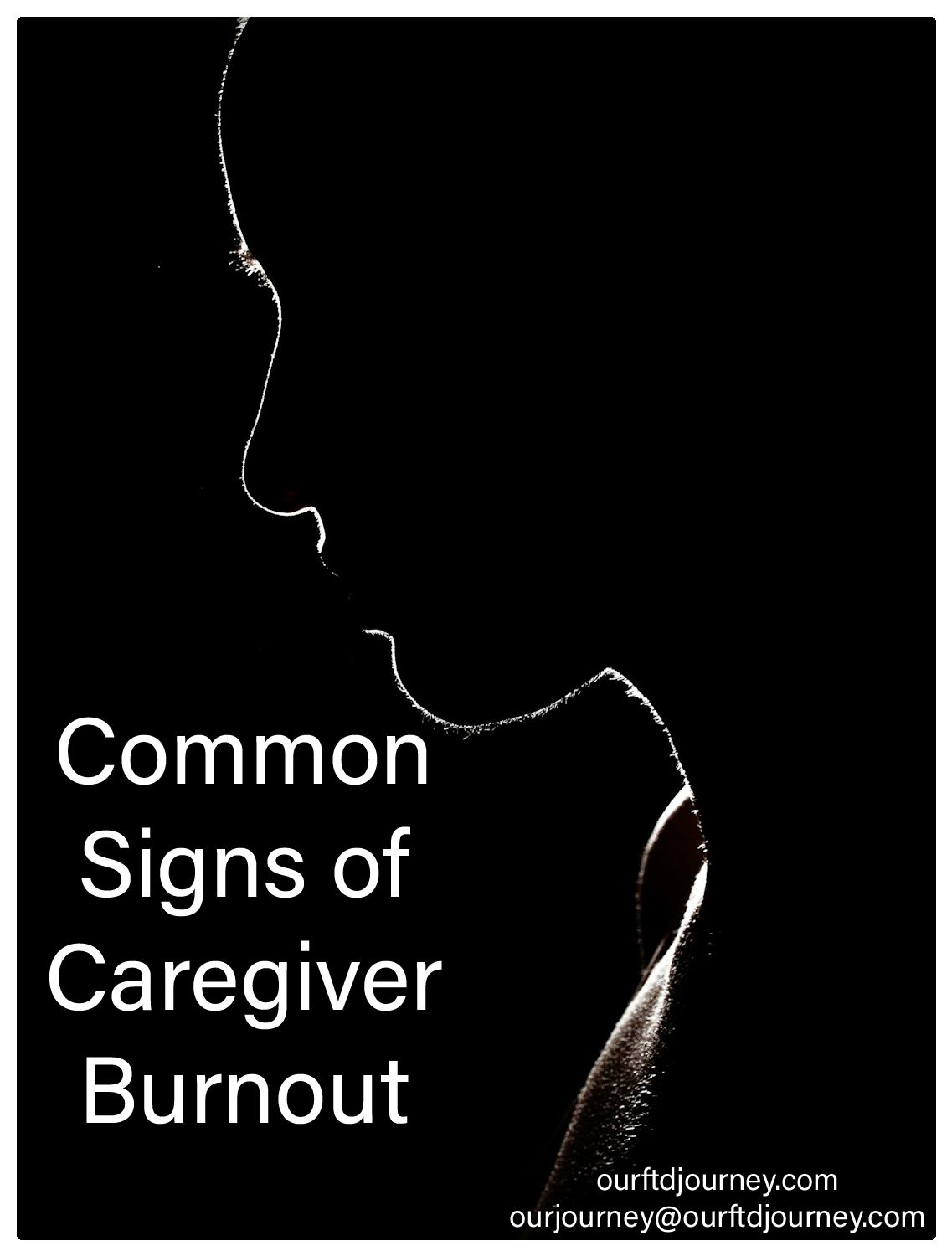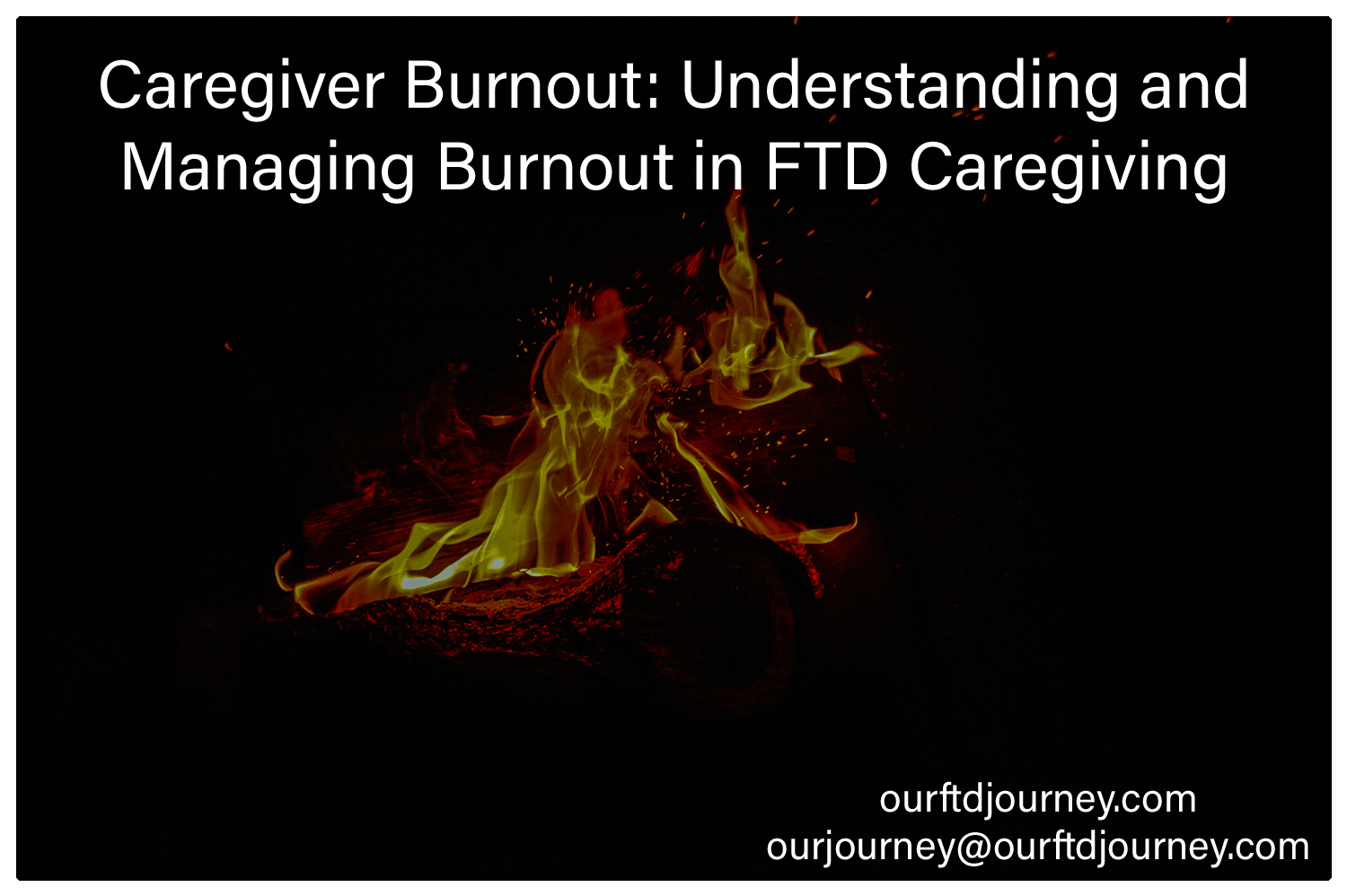Caregiver Burnout: Understanding and Managing Burnout in FTD Caregiving
This post may contain affiliate links from Amazon.com, TheWrightStuff.com, flexoffers.com, and CaregiverProducts.com, which means I may recieve commissions if you choose to purchase through links I provide (at no extra cost to you). If you use any of my links, I greatly appreciate it!
As a caregiver for someone with Frontotemporal Dementia (FTD), the journey is emotionally, mentally, and physically draining. My mother was diagnosed with FTD at the age of 57, and over the years, I’ve experienced firsthand the overwhelming effects of caregiving, especially the risk of burnout. Many caregivers, particularly those looking after FTD patients, are highly susceptible to burnout due to the unique demands of this condition.
In this blog post, I’ll share what caregiver burnout looks like, why it’s common among FTD caregivers, and how I’ve managed to cope over the years.
What is Caregiver Burnout?
Caregiver burnout is a state of emotional, mental, and physical exhaustion that occurs when you’ve been providing care for an extended period, without sufficient rest or support. For caregivers of loved ones with FTD, burnout is common because FTD often involves challenging behavioral changes such as loss of empathy, personality shifts, and impulsivity. These changes make caregiving particularly demanding.

Common Signs of Caregiver Burnout:
Exhaustion: Feeling constantly tired, no matter how much rest you get.
Irritability: Snapping at small things that normally wouldn’t bother you.
Withdrawal: Pulling away from friends, family, and social activities.
Resentment: Feeling anger towards your loved one or others who aren’t helping.
Loss of Joy: No longer finding joy in activities you once loved.
Why FTD Caregivers are at a Higher Risk for Burnout
Caring for someone with FTD is different from other forms of dementia, like Alzheimer’s. FTD affects the parts of the brain that control behavior and emotions. This means caregivers are not just dealing with memory loss but also significant personality changes, which can be heartbreaking and exhausting. For instance, my mom often displays behavior that’s completely out of character, and it took me years to come to terms with the fact that it’s the disease, not her, causing these changes.
Additionally, FTD caregivers often have to provide care for many years as the disease progresses slowly. The demands of long-term caregiving can make it difficult to maintain a healthy balance between caregiving, work, and personal life, leading to burnout.
How to Manage Caregiver Burnout
While burnout is common, there are ways to manage it and prevent it from overwhelming your life. Here are some strategies that have helped me over the years.
1. Ask for Help and Build a Support System
One of the biggest lessons I learned is that you don’t have to do it alone. It’s okay to ask for help. Whether it’s from family, friends, or professional caregivers, sharing the load can give you the mental and emotional break you need. In my case, reaching out to other FTD caregivers through online support groups was a game changer. There’s something incredibly comforting about talking to people who “get it.”
2. Practice Self-Care
As a caregiver, it’s easy to put your needs last, but self-care is critical. I started with small steps—taking a walk, having a cup of tea in peace, or meditating for just 10 minutes. These short moments of rest can help reset your mind and body. I also started journaling as a way to process the emotions I couldn’t express to anyone else.
3. Use Respite Care
Respite care services provide temporary relief for caregivers by offering professional care for your loved one. This could be for a few hours or even a few days. Using respite care allowed me to take some much-needed time for myself, without feeling guilty or anxious about my mom’s well-being.
4. Set Boundaries
One of the hardest things I had to learn was setting boundaries. As much as I love my mom, I had to recognize that I couldn’t be “on” all the time. I started saying no to things that drained my energy, whether it was social obligations or additional caregiving tasks I couldn’t handle alone. Setting boundaries helped me protect my mental and physical health.
5. Accept Your Limits
It’s important to remember that you are human, and it’s okay not to be perfect. Caregiving is a huge responsibility, and there will be times when you feel overwhelmed, frustrated, or even resentful. That’s okay. Acknowledging your feelings and accepting your limits is key to managing burnout in the long term.
Conclusion: You Are Not Alone
Caregiver burnout is real, and if you’re in the thick of caregiving, it’s easy to feel like you’re alone in your struggle. But you’re not. There’s no shame in feeling exhausted, frustrated, or even resentful at times. Remember that you can’t pour from an empty cup, and caring for yourself is just as important as caring for your loved one.
If you’re feeling burnt out, take a step back, ask for help, and find ways to recharge—whether through self-care, support groups, or respite care. You matter, and your well-being is critical to providing the best care for your loved one.






